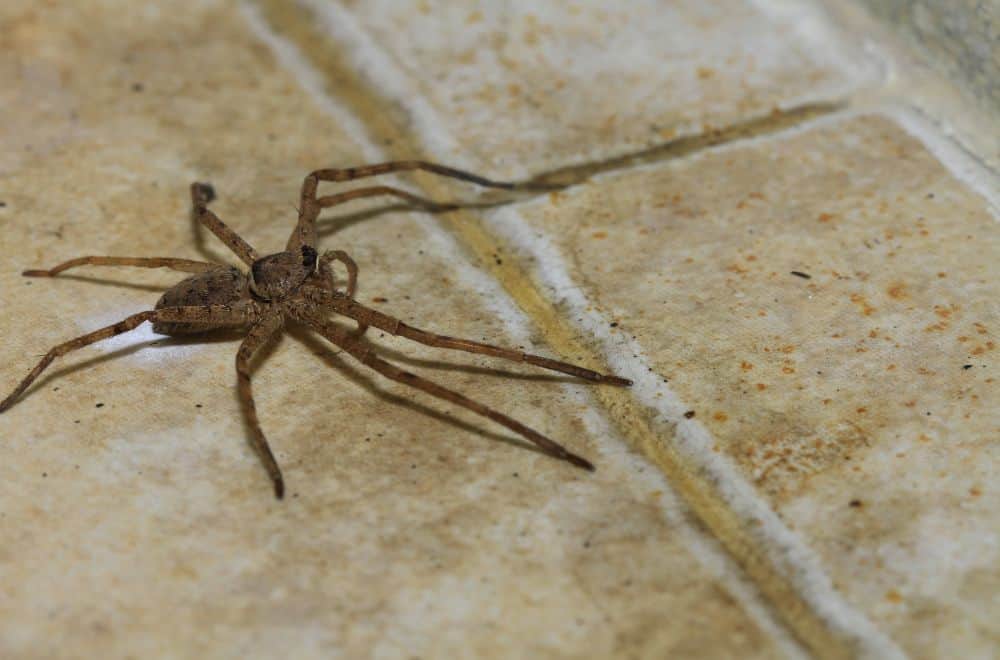Homeowners are often unsure about what attracts spiders to their houses. The truth is that a surprising number of things attract spiders, including yummy food, water source, warmth, and dirty environment.
Interestingly, there is no need to worry about whether your home is a comfy surrounding for these arachnids or not. They will come when you make ideal conditions for insects that they consider food, regardless of everything else.
Spider types |
||
| Type | Color | Size |
| Wolf spiders | Brown or black with tan, yellow, red, or brown markings | 0.25 to 1.38 inches
(6.35 – 35 mm) |
| Brown recluse spiders | Tan to dark brown | 0.25 to 0.50 inches
(6.35 – 12.7 mm) |
| Black widow spiders | Solid black | Females – 1.50 inches (38 mm)
Males – 0.75 inches (19 mm) |
| Yellow Sac spiders | Tan or light yellow | 0.25 to 0.37 inches
(6.35 – 9.4 mm) |
| Jumping spiders | Contrasting bright or iridescent | 0.04 to 0.85 inches
(1 – 21.5 mm) |
| Hobo spiders | Brownish | 0.30 to 0.65 inches
(7.6 – 16.5 mm) |
| Daddy long legs | Brown | 0.02 to 0.9 inches
(0.5 – 23 mm) |
| American house spiders | Brown with yellow or orange, dark-striped legs | 0.25 inches
(6.35 mm) |
| Grass spiders | Cream, yellow, or brown with two dark brown bands | 0.40 to o 0.80 inches
(10 – 20 mm) |
| Orb-weaver spiders | Nocturnal species – gray or brown
Diurnal species – bright yellow or orange with black markings |
Females – 2 to 6 inches
(5 – 15 cm) Males – 0.50 to 2 inches (1.3 – 15 cm) |
Spider Types
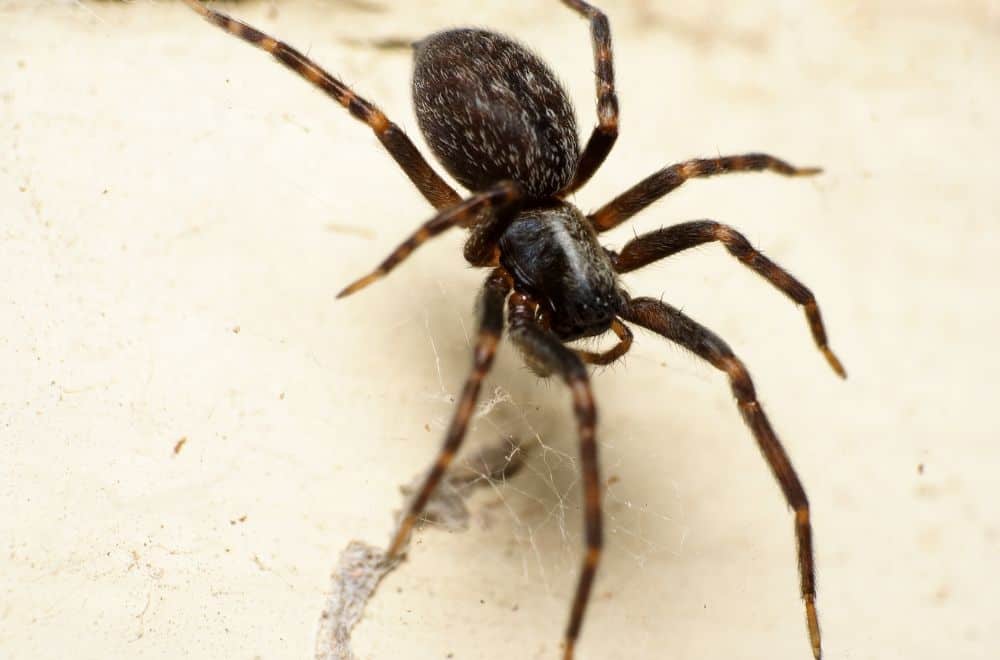
You can find several spider species in your home. Sometimes, only appropriate identification can help you decide whether they are beneficial or can jeopardize your health and hurt you.
For instance, you can recognize three venomous spider species in the US, the Black widow, Hobo, and Brown recluse. Finding them in the house requires immediate reaction and fast elimination, while other species can keep your home safe from pest insects. Let’s take a look.
Brown recluse spiders – These tan to dark brown spiders are 0.25 to 0.50 inches (6.35 – 12.7 mm) long and have a specific dark brown violin-shaped pattern on the back.
They typically live in dark, warm, and dry places like closets and basements. Be careful with these poisonous arachnids since their painful bites last long and may cause tissue necrosis.
Hobo spiders – Brownish, 0.30 to 0.65 inches (7.6 – 16.5 mm) long Hobo spiders are venomous and hazardous species. These bad climbers avoid living above the ground level so that you can see their nets in holes and crevices in moist areas, like your basement.
Black widow spiders – Black widows are solid black spiders with a red hourglass-like pattern on the abdomen underside. Their toxin is almost 15 times stronger than rattlesnakes’ venom.
Deadly females are 1.50 inches (38 mm) long, while harmless males are twice as small and only 0.75 inches (19 mm) long. They live worldwide, including four species found in the US.
Wolf spiders – You can recognize these brown or black spiders thanks to their unique tan, yellow, red, or brown markings. These 0.25 to 1.38 inches (6.35 – 35 mm) long creatures live underground throughout the US.
Yellow Sac spiders – Tan or light yellow Sac spiders typically reach 0.25 to 0.37 inches (6.35 – 9.4 mm) in length. You can see them in your garden and under compost or leaf piles, so be careful. Even though these creatures are mildly poisonous, they may cause painful bites.
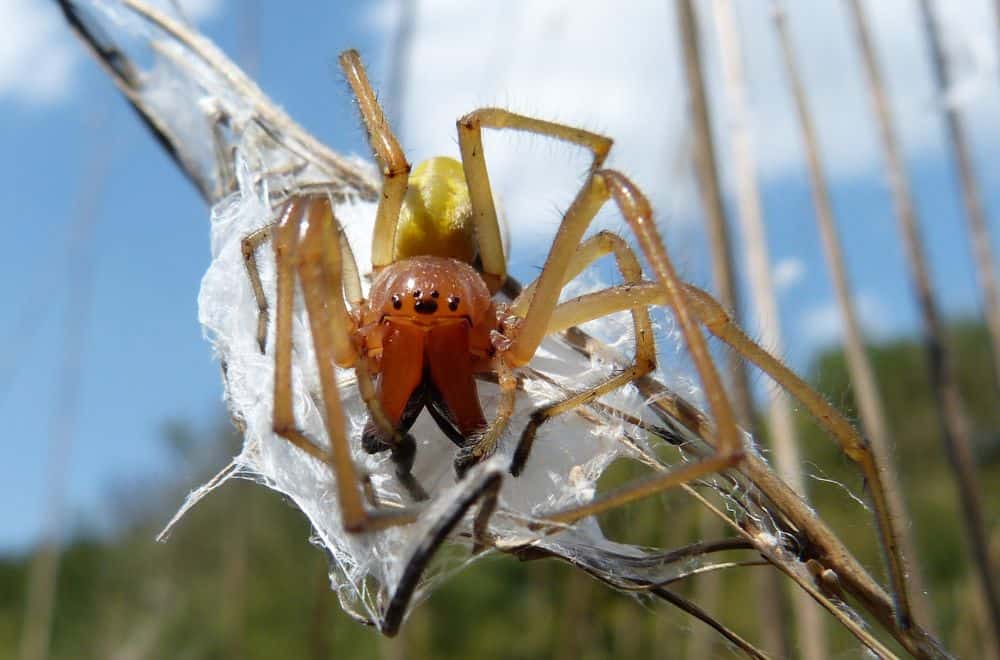
Jumping spiders – These unique, contrasting bright or iridescent arachnids undoubtedly jump around. All 4,000 species are tiny, with a length ranging from 0.04 to 0.85 inches (1 – 21.5 mm). Even though they can bite, all 300 species living in North America are non-poisonous.
Daddy long-legs – These brown, 0.02 to 0.9 inches (0.5 – 23 mm) long cannibals eat members of their species. They are a harmless species common in California that makes fascinating fragile nets.
Common house spiders (American house spiders) – These sizable, hairy brown arachnids are approximately 0.25 inches (6.35 mm) long and can be found in every American home. They are entirely harmless, making thick webs in room corners and catching annoying insects.
Grass spiders – You can find these 0.40 to o 0.80 inches (10 – 20 mm) long arachnids throughout the US making funnel webs in grass. You can recognize them for their cream, yellow, or brown bodies with two dark brown bands extending on both sides of their backs.
Orb-weaver spiders – Most of these spiders are nocturnal species, but not all. Unlike these gray or brown creatures, diurnal species are bright yellow or orange with black markings.
You can find them everywhere, except in the Arctic and Antarctica, while about 180 species live in North America. Females are more sizable and can reach approximately 2 to 6 inches (5 – 15 cm) in length. Smaller males are about 0.50 to 2 inches (1.3 – 15 cm) long.
What Attracts Spiders?
As you guess, the primary thing that attracts spiders to enter the house is available food. However, you should keep several other things in mind when you don’t want to see them in your home. Let’s take a look.
1. Insects (food)
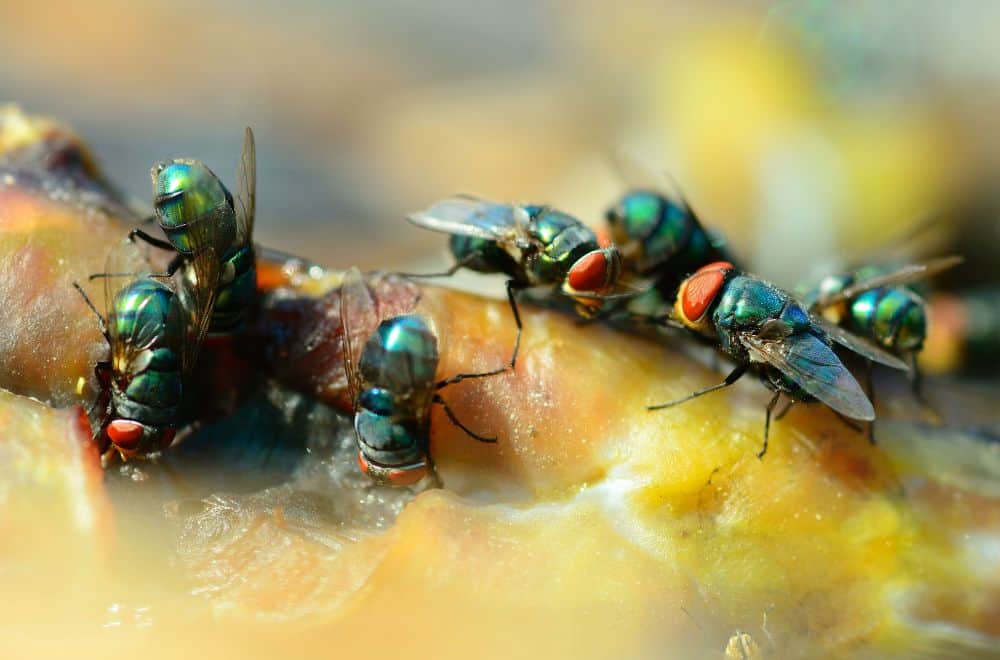
Most spiders are predators that feed on earwigs, crickets, flies, mosquitoes, fruit flies, bees, clothes moths, ants, and cockroaches.
Therefore these arachnids are highly beneficial guests, but some people can’t stand nets in room corners. If you are one of them, the quickest way to eliminate spiders is to kill insects they treat as food.
2. Fruit
You can often spot spiders crawling over overripe fruit looking for prey, like fungus gnats and fruit flies. Several dangerous species often hide inside grapes and bananas, making it better to avoid keeping this food type on the kitchen table.
3. Other spiders
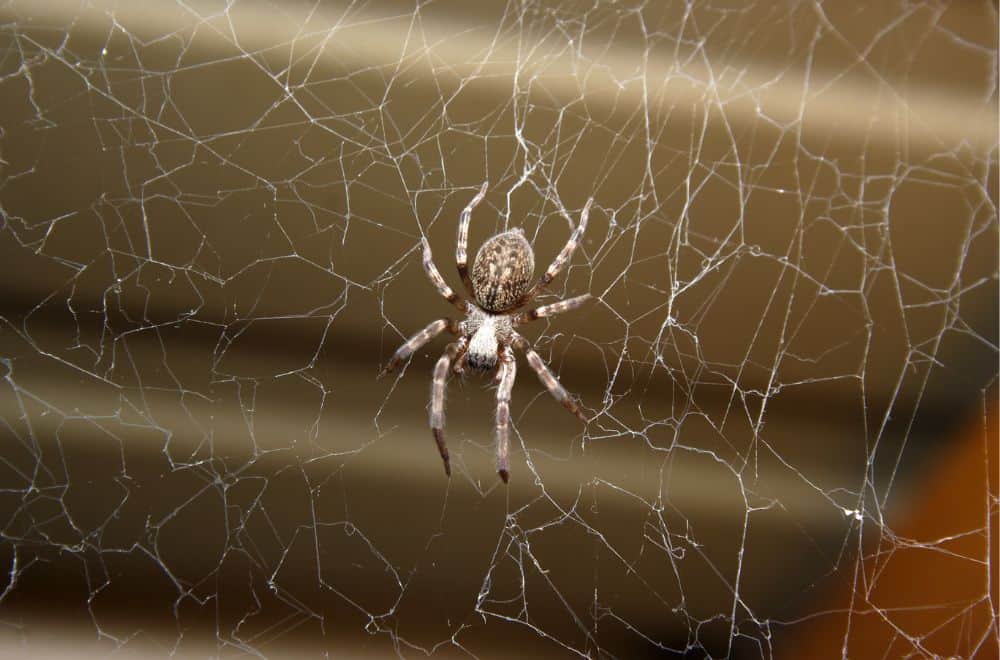
Cannibalism is common among arachnids since some spiders eat smaller species of their kind besides other insects. For instance, Daddy longlegs spiders hunt and eat members of their species. So, getting rid of insects to reduce the number of these arachnids by depriving them of food is not always successful.
4. Seasons and weather
Unlike other insects entering your home during cold months, spiders don’t care particularly about warmth. When they are exposed to gradual cooling, they can survive temperatures up to 23 F (-5 C).
On the other hand, they will look for damp and fresh spaces during the summer to avoid extreme heat. Even though they can stand temperatures up to 110 F (43.5 C), you can expect infestation in that period. Additionally, most species try to avoid heavy rains and storms.
5. Water

Spiders need water to survive, although only a small amount is enough. Besides collecting it from their prey, these arachnids can drink the morning and evening dew. Sometimes, you can see them looking for puddles of water or sink taps, while some species need high humidity from basements and garages.
6. Hidden places
Spiders typically enjoy their privacy, so you can expect that dark and less-used places attract them. They usually choose hidden corners in the bathroom and kitchen, basements, and sheds to live, mate, and lay eggs.
7. Habitat
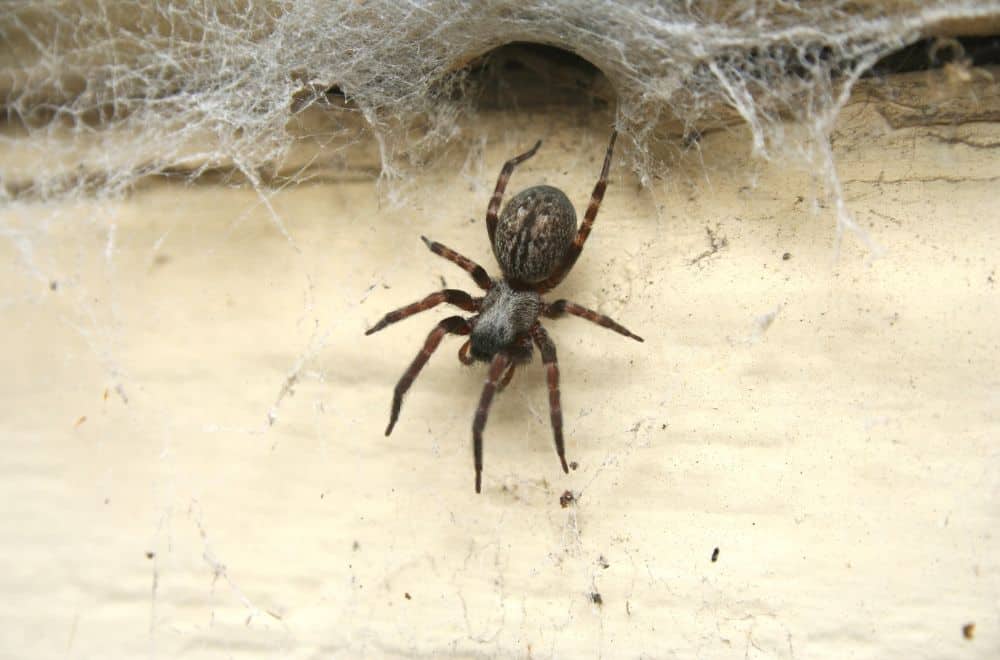
Most spider species choose houses for their shelters, mainly looking for clutter and dirty places full of garbage, storage boxes, piles of papers, and unused bags. Even though spiders prefer being hidden, you can expect to find these creatures on your sheets when storing old newspapers, cardboard, or bags under your bed.
Be aware that food leftovers and waste attract arachnids’ prey, like flies. Therefore, you can expect to see spiders looking for these insects near your trash can or around places for food preparation and storage.
8. Second-hand furniture
The old furniture is not particularly interesting to spiders but is an excellent place for laying eggs. Therefore, you can unintentionally bring egg sacs into your home with attractive antique pieces.
9. Light

Even though spiders like spending time in dark places, insects flying around lights are the subject of their interest. So, you can expect to see them inside your home when turning on lamps and computer screens near windows and doorways.
Since such light sources attract prey insects, you can see spiders waiting for them in their webs. Turning off the porch light and removing light sources from entrances help eliminate flying insects and prevent spiders from coming indoors.
10. Entrances
Spiders rarely enter homes through windows and doors. Instead, you can see them crawling through tiny holes, wall cracks, gaps, and damaged door seals.
They can also use trees and bushes to jump inside, or you can bring them on shoes, luggage, or furniture. Therefore, sealing all openings and installing mesh screens is crucial to protect your home.
11. Mating season
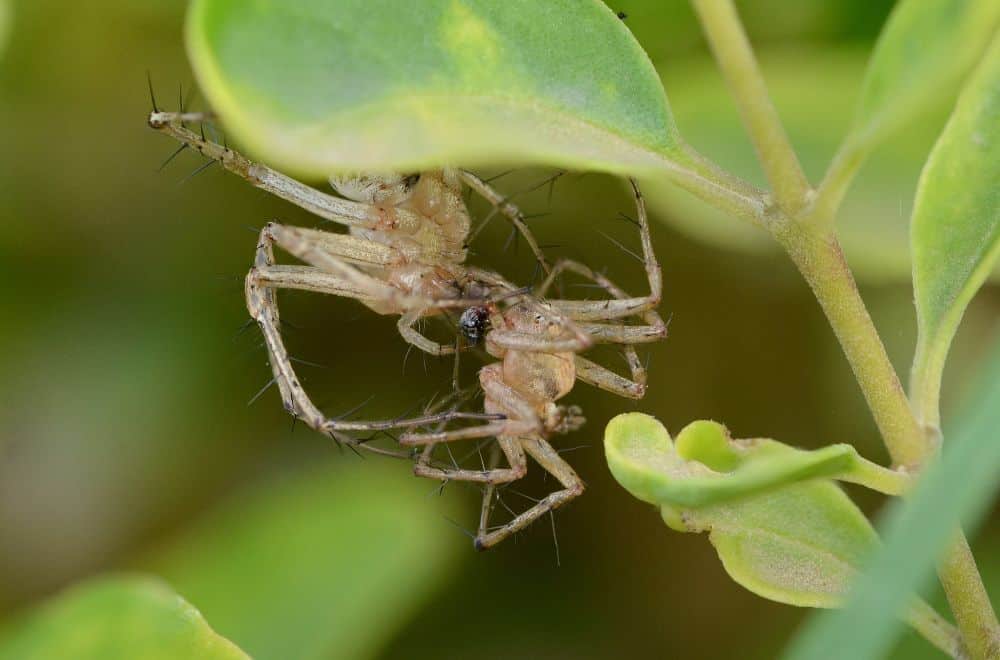
Spiders attract other members of their species during mating seasons. They use specific sounds and rituals to attract the opposite sex, increasing their number inside your home. For them, your house is an ideal place since it is far away from their predators, like birds, centipedes, lizards, other spider species, toads, and spider wasps.
In most cases, males share webs with females while laying approximately 100 to 3,000 eggs at once. Without natural enemies, young spiders will take over your home unless you take drastic measures to exterminate them.
12. Dirty kitchen appliances
Remember that food leftovers and crumbs attract insects, and their increased number brings spiders into your home. Keeping your stove, toaster, and microwave clean can help you prevent arachnid invasion.
13. Plants

Since most insects that spiders use for feeding on are herbivores, plant abundance in your home and yard will create an appealing environment for their invasion. Sometimes, you can find their nets between houseplant foliage, so their regular wiping can help eliminate these creatures from your home.
Ways to Eliminate Spider Infestation
Your primary goal is to eliminate spiders or reduce their number to an acceptable level. Therefore, it is necessary to take some steps, such as:
- Regularly clean the house and remove food leftovers from the kitchen, dining room, storage space, and couch
- Regularly vacuum your bedroom and wash your linen
- Install a door sweep and seal wall cracks
- Bring spider-repelling plants into your home, particularly the most efficient lavender, mint, lemon balm, rosemary, lemongrass, and basil
- Sprinkle Diatomaceous earth around entrances
- Spray essential oils around your home, primarily those made of peppermint, lavender, mint, eucalyptus rose, cedar, tea tree, and citrus
- Make a DIY cleaning spray of white vinegar or dish soap
- Use non-toxic pesticide spray or ultrasonic pest repellents
- Turn off bright lights on the porch and in places next to the window
- Purchase cedar wood furniture and inspect old pieces before bringing them inside
- Keep your landscaping free of pests
Sometimes the invasion is too high, and reducing spider numbers in your home is impossible. In such cases, your best option is to call professionals and let them finish the job.
Ways to Prevent Spiders from Returning
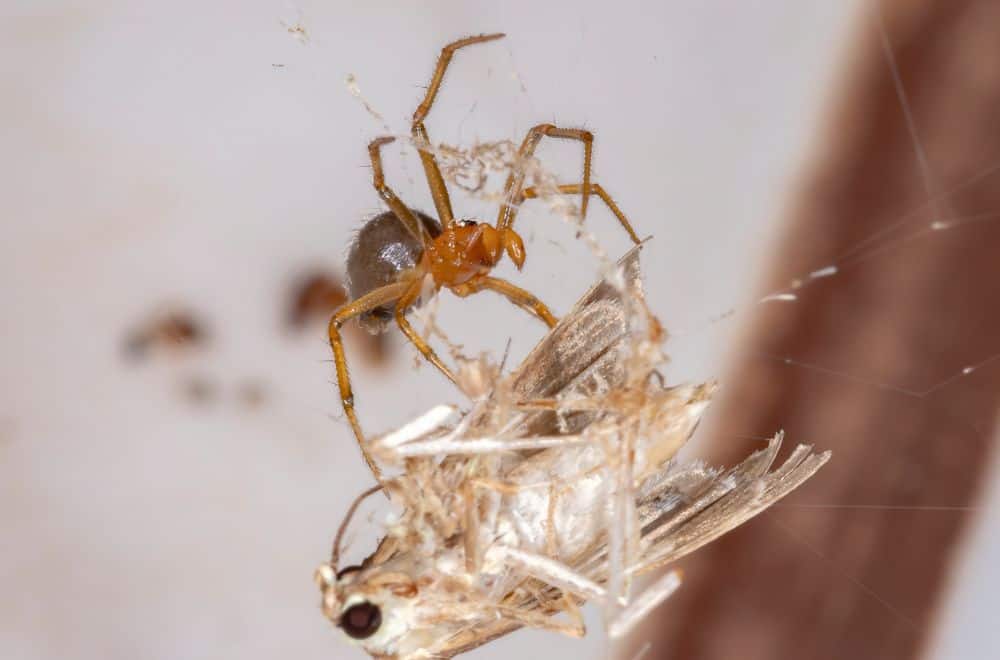
There are several things you can do to prevent spiders from re-entering your home, such as:
Deprive them of food and water – Find ways to prevent flies and moths from entering your home and remove water sources as a sure way to keep your home spider-free.
Spider trap – Arrange sticky traps containing pheromones around your home. They will attract, catch, and kill spiders without jeopardizing your kids and pets.
Remove spider webs – Spiders can’t hide, catch prey, and breed without their nets. Consequently, removing these webs helps arachnids’ elimination.
Apply particular colors – Interestingly, some spider species pay attention to colors. Research confirms that they enjoy green and ultraviolet but hate light blue, so you should paint your porch accordingly. Additionally, dark brown and black repel pest bugs, so you can use these colors to prevent spiders from entering.
Miss Muffet’s Revenge – This product is efficient against these arachnids without releasing harsh chemical fumes.
Summary
You can recognize numerous spider species worldwide, including some living in the US. Remember that a few are beneficial and help eliminate pest insects, but others are unpleasant and sometimes harmful to humans and pets. Find a way to prevent access to food, water, and shelter to avoid arachnids inside your home.
